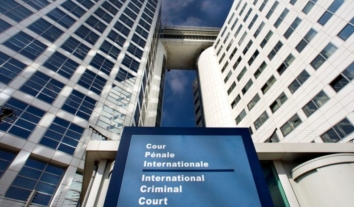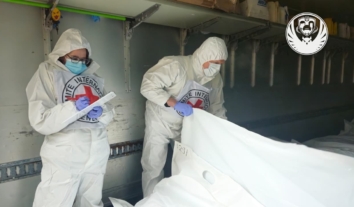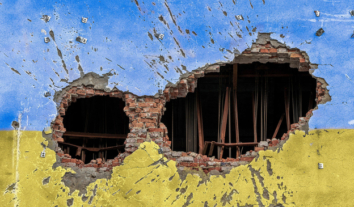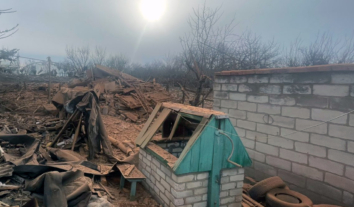The Shelling of Mariupol on January 24th originated from the ‘DPR’ – Report
The shelling of Mariupol on January 24, 2015 originated from the direction of the Dzherzhynske–Kachkarske-Rosy Luxemburg villages, which are located in territory controlled by the so-called “Donetsk Peoples Republic” (DPR). This is the conclusion of a field mission report by the International Partnership for Human Rights (IPHR). The report’s authors are sure this attack can be qualified as a war crime that should be investigated by the relevant authorities in the framework of international law on armed conflicts.
On January 24th, 2015 at 9:20 local time, around 100 rockets struck private and public buildings: shops, drug stores, market places, banks, schools and kindergartens in the Vostochniy residential district of Mariupol, Ukraine. The shelling lasted anywhere from 35 seconds, which was recorded by the local OSCE mission, up to several minutes, as reported by one of the victims.
31 civilians, including two children, were killed and more than 100 were injured. Local authorities also recorded more than 650 complaints concerning the destruction of private property as a result of the attack.
The field mission interviewed witnesses and victims and examined the scene of the incident and all available evidence.
The authors of the report point out that there are no military objectives in Vostochniy, which is the home of 30,000 people. The nearest potential target is a Ukrainian security checkpoint is located in a neighboring district at the junction of Taganrogska and Marshala Zhukova streets.
The tragedy in Vostochniy preceded the shelling of a Ukrainian military base near the village of Sartana, which is located 7 km north of the district, and a Ukrainian military checkpoint in Vynogradne 3 km south to the south.
It is believed that, in both cases, the shelling was carried out using a Grad rocket launcher (MLRS). The shelling destroyed a high-voltage power line in Sartana, which provides electricity to the district, and disrupted electricity and water service. The MLRS also destroyed a high voltage power line, disrupting the electric supply to the Vynogradne village, and damaged a gas power station.
As a part of the mission, researchers documented and mapped a total of 91 craters that resulted from the shelling. One projectile hit Kindergarten #160, five other projectiles hit two other schools.
Most of the injured were taken to the hospital between 11:00 and 12:00. Staff of the city’s emergency department extinguished the fire that had broken out as a result of the shelling and worked with engineers from the Azov unit to diffuse unexploded rockets that had not yet exploded. Meanwhile, the police and prosecutor’s office gathered fragments of missiles to aid in an investigation.
At around 1:00pm, a Grad rocket attack struck the Ukrainian military checkpoint located in the vicinity of the district with a standard missile package of 40 shots. Nobody was injured in this attack according to representatives of the Azov Brigade.
On February 2nd, 2015, Vynogradne was shelled again. Moreover, the villages of Sartana and Vynogradne located 3 km south from Mariupol were repeatedly shelled throughout the second half of January.
Arms and fire line
The authors of the mission report state that the weather was dry and cloudy with very high visibility at the time of the shelling in Mariupol.
Members of the mission unearthed parts of a missile near a house on Ravnynna street (point 20 on the map). These included fragments obtained from sites near house #31 on Ravnynna st. (point 20 on the map mentioned above); house #37/2 on Ravnynna st. (point 12); apartment #163 in house #79 at Olympiyska st. (point 39) and another crater nearby (point 29).
Analysis of these missile fragments and the impact craters indicate that the attack was carried out using a MLRS Grad. Members of the mission team did not find traces of other arms.
An examination of the impact sites, the angles of deviation of the strikes, and shrapnel traces near the epicenters of the explosions provide a basis for their conclusions. Most of the shelling is likely to have been carried out using several Grad rocket launchers (MLRS) located at a point east-north-east from the affected area, at azimuth 65-80°. The estimated point from which the shelling originated is the direction of the Dzherzhynske–Kachkarske-Rosy Luxemburg villages, which are located on territory controlled by the so-called “Donetsk Peoples Republic” (DPR).
After January 24th, 2015, the field mission members concluded that the incident was a deliberate attack in the context of the ongoing armed conflict.
Taking into account assessments of the site targeted by the attack, the weapons used, the scale, the direction of the shelling, and the fact that the head of the so-called “DPR” Zakharchenko had publicly announced an advance towards Mariupol prior to the actual attack, it can be stated that the attack on the residential area was deliberate.
The report states that “According to the applicable law (article 8(2)(b)(i) of the Rome Statute and article 51(2)(3) of Additional Protocol 1 to the Geneva Conventions), intentionally directing attacks against the civilian population as such or against individual civilians not taking direct part in hostilities is a war crime. According to article 85(3)(а) of Additional Protocol 1 to the Geneva Conventions, making the civilian population or individual civilians the object of an attack is a grave breach of the Geneva Conventions.”
Even if a second version of the events is confirmed by the investigation, this particular attack can still be classified as a war crime. The attackers violated both the principle of distinction and the principle of proportional harm, as the weapon and target were selected without proper consideration of the military gains and possibility of harm to the civilian population.
















